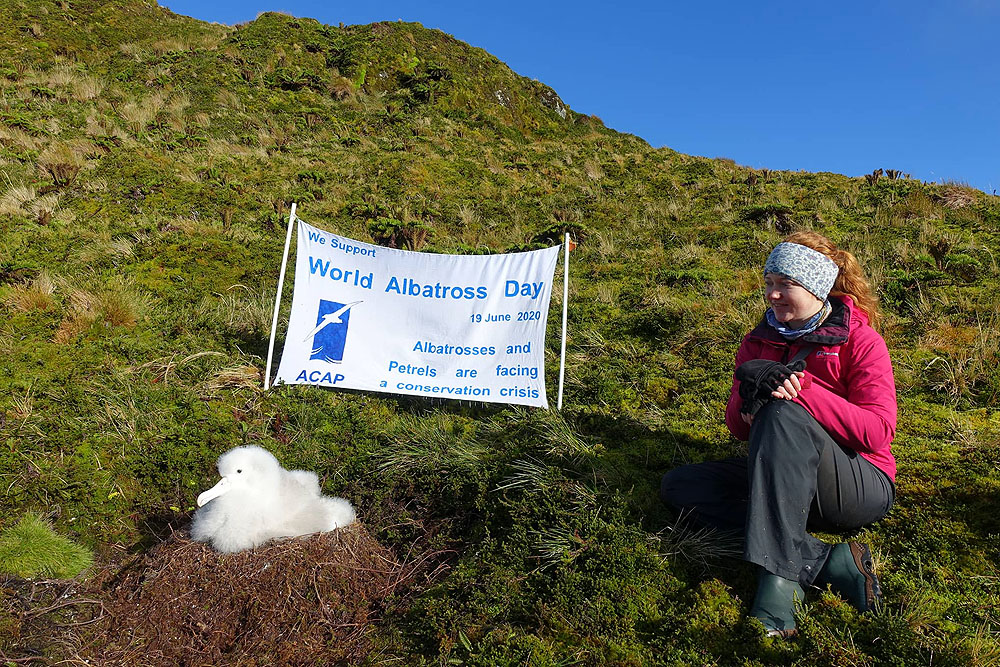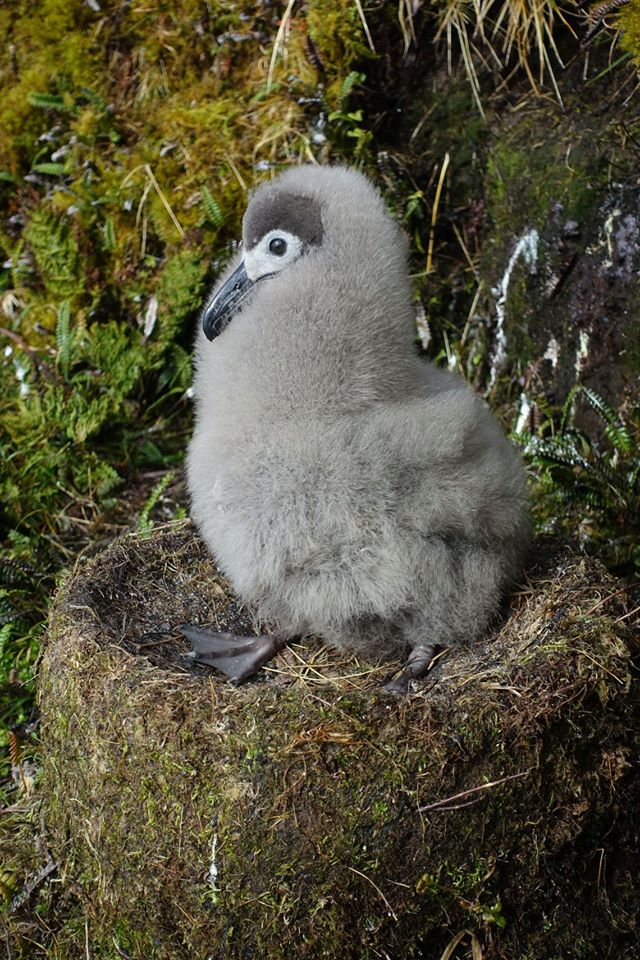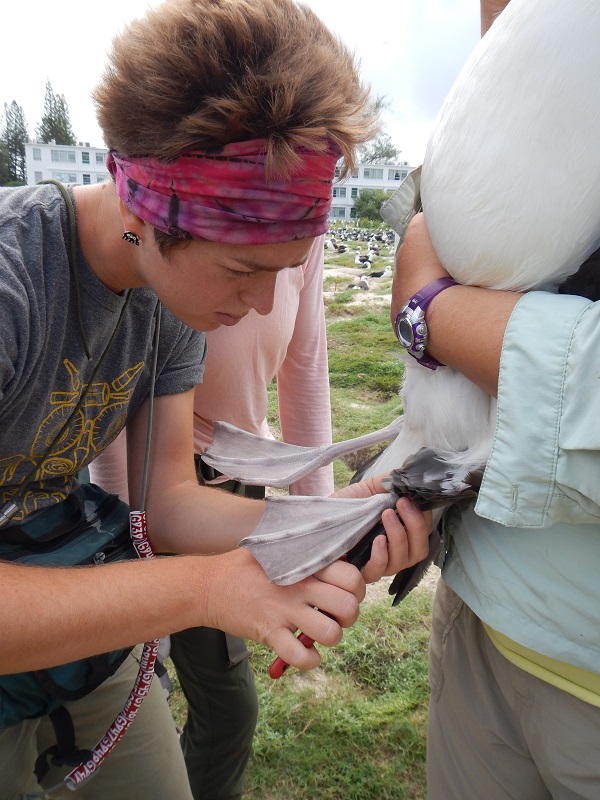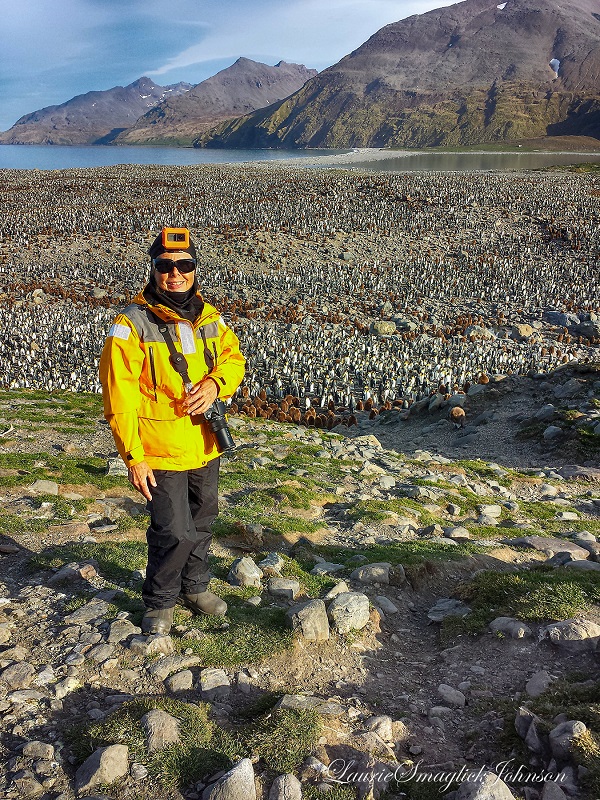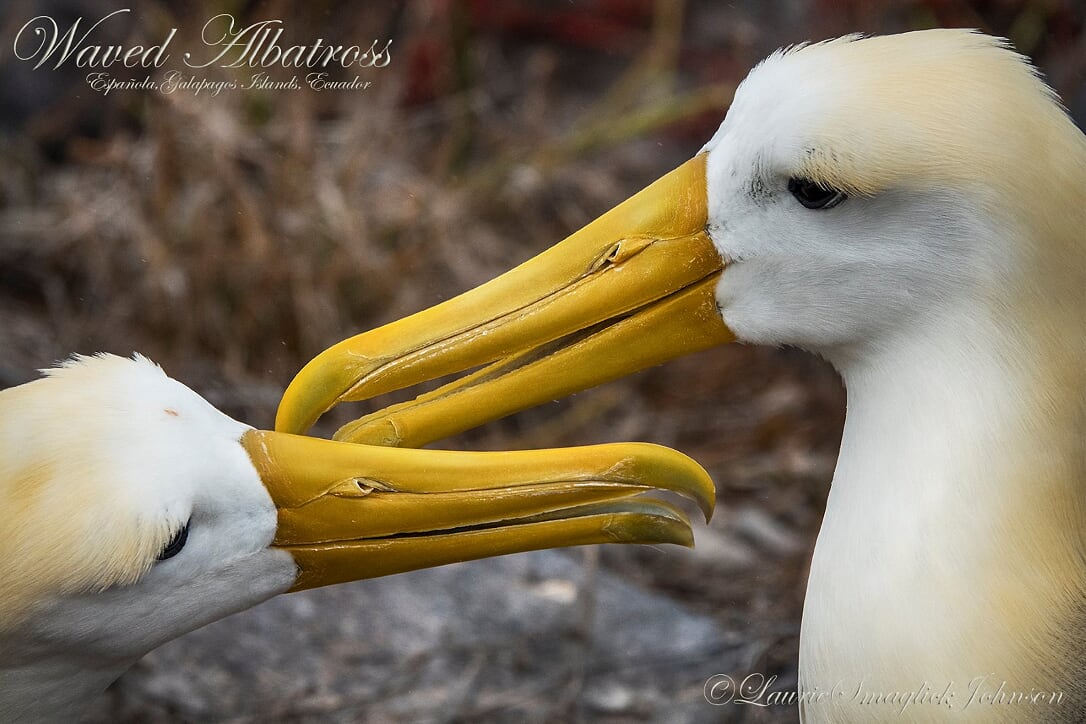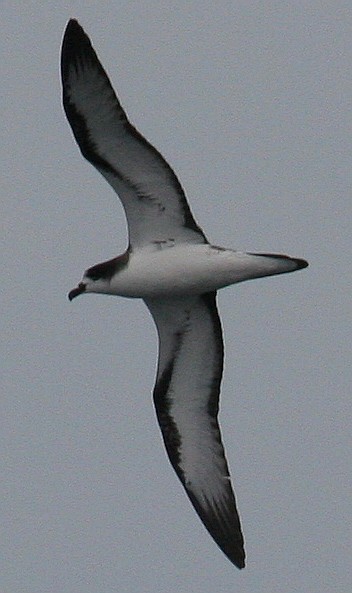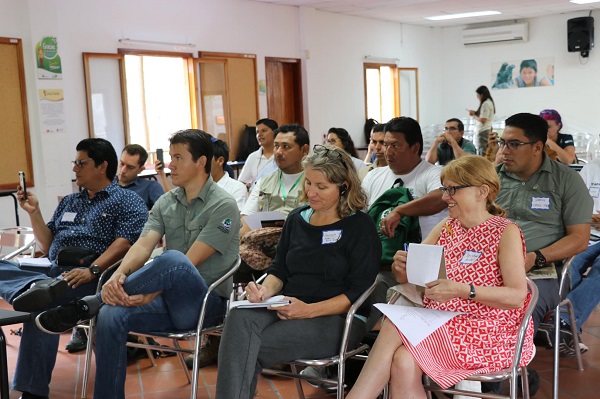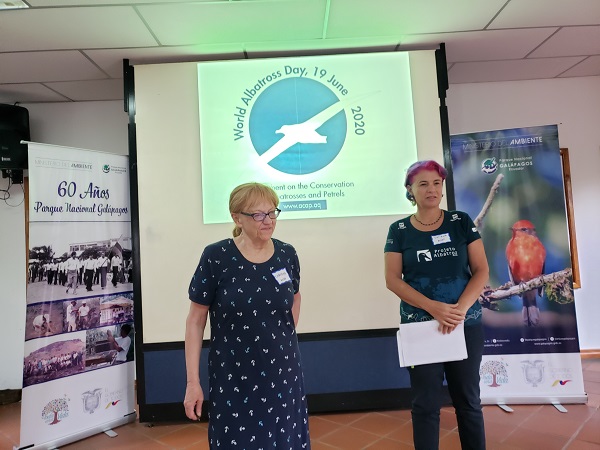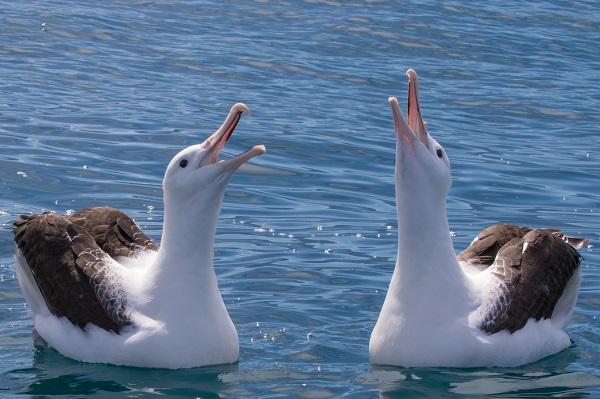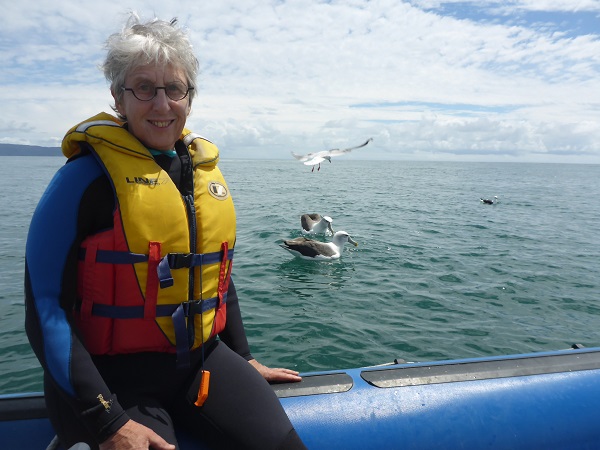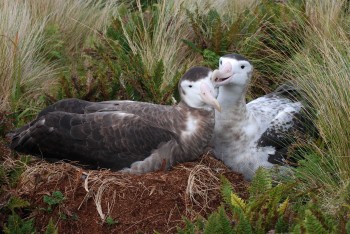Ben Dilley (FitzPatrick Institute, University of Cape Town, South Africa and colleagues have published in the open-access journal Marine Ornithology on a burrowing petrel survey of the Nightingale Island group in the South Atlantic. Two islets are recommended for nature reserve status.
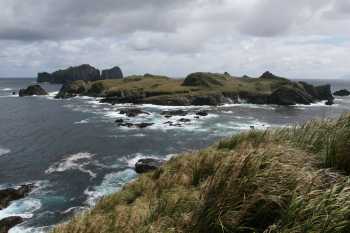
Islets off Nightingale Island: Middle and Stoltenhoff behind
The paper’s abstract follows:
“Nightingale is a group of three small, uninhabited islands in the central South Atlantic Ocean. The islands are free of introduced mammals and are largely pristine, supporting two endemic land birds as well as globally important populations of several species of seabirds. Seven species of burrow-nesting petrels are known to breed on the islands, including roughly 40 % of the world's population of Great Shearwaters Ardenna gravis. We estimated burrow densities by systematically searching for their burrows in 5×5-m quadrats across the main island in the austral summer of 2015. A total of 1789 petrel burrows fell within the 75 sample quadrats with an average density of 0.95 burrows∙m-2, suggesting that upwards of four million petrels breed on the main island. Burrow densities and occupancy rates were extrapolated by species for each habitat type to generate population estimates: Great Shearwaters 2.34 million burrows (1.82 million pairs, 95 % CI 1.67-1.97 million); Broad-billed Prions Pachyptila vittata a minimum of 83 000 burrows (with many more pairs breeding in rock crevices, total estimate 100 000-500 000 pairs), White-faced Storm Petrels Pelagodroma marina 17 800 burrows (11 700 pairs, 95 % CI 4 700-16 600), Soft-plumaged Petrels Pterodroma mollis 12 100 burrows (estimated 8 000-10 000 pairs), Fregetta Storm Petrels F. grallaria/tropica 6 600 burrows (estimated 5 000 pairs), Common Diving Petrels Pelecanoides urinatrix 3 900 burrows (estimated 5 000 pairs), and Subantarctic Shearwaters Puffinus elegans an estimated 1 000 pairs. Although Great Shearwater burrow densities and occupancies were lowest in the areas historically used for exploitation of chicks and eggs (ongoing, but now monitored), these results suggest the great shearwater population on Nightingale Island has remained relatively stable since the first estimates in the 1950s.”
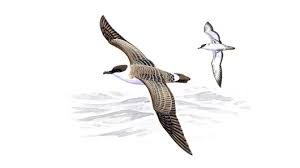
Great Shearwaters at sea
Reference:
Dilley, B.J., Davies, D., Mitham, A., Glass, T., Repetto, J., Swain, G. & Ryan, P.G. 2019. Population estimates of burrow-nesting petrels breeding at the Nightingale Island group, Tristan da Cunha Archipelago. Marine Ornithology 47: 267-275.
John Cooper, ACAP Information Officer, 18 January 2020

 English
English  Français
Français  Español
Español 